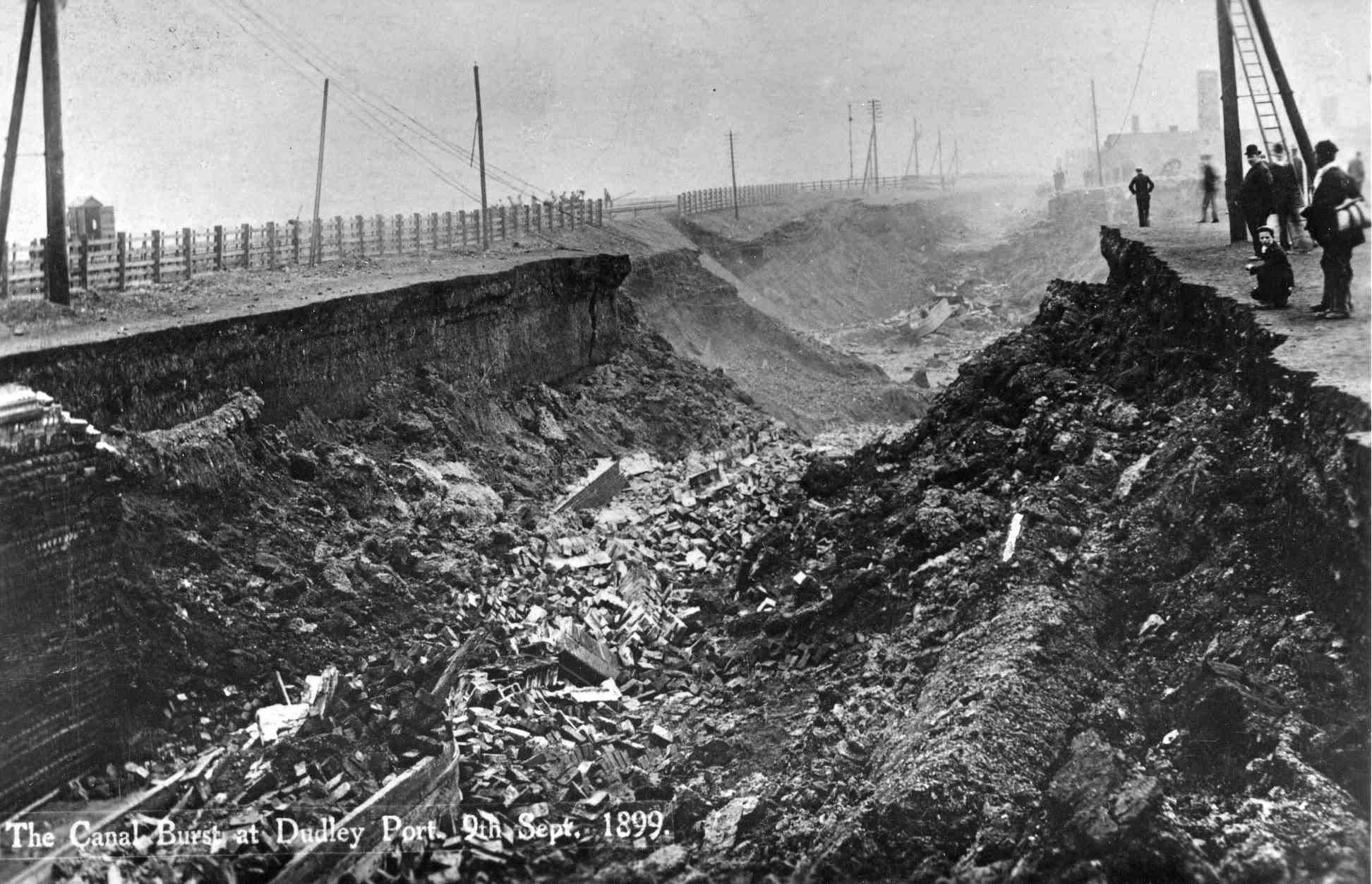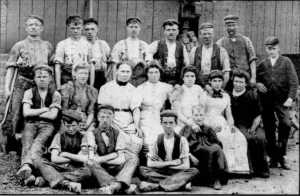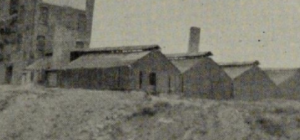The above picture and article below appeared in the 12th August Black Country Bugle in 1999. It was a query sent in by a descendent of a brick worker thought to be Barnett’s brickworks in Dudley Port. The photograph and where and when it was taken were unknown, as were any of the other 18 individuals pictured. The piece speculates that it may have been taken between 1910-1920 and then details some facts about The Rattlechain brickworks and the history.
Ironically not mentioned in the piece however is the near 100th anniversary of the canal breach of 1899 involving Barnett’s Rattlechain works!

Although belated by some 24 years, 😆 here’s my take and opinion on the matter, and if the original sender of the picture would like to get in touch , I would hope that it may be of interest.
Firstly the picture. I don’t think that this is Rattlechain brickworks! The Bugle made this association and not the correspondent. I’m also not sure that the ten year period is correct either- though it would be a good estimate and I will explain why. The problem with anecdotal history is that wires can be crossed, details left out or added to and wrong conclusions made. It may well have been that the relative in question did work at a Barnett’s brickworks, but not necessarily is pictured in this particular photo at that site. Without a date, how would we know that, or how old this person was in the picture? We need something to date the picture or the person, or know more about their lifestyle through census records. Without the surname of the man “Cree”- this is impossible.
The only true picture of Rattlechain brickworks that is known from the period in question was taken in 1912, as part of the article I covered in THIS post from The American Brick and Clay Record. This appears to be an entirely brick built structure.
The people in the photograph are standing behind a wooden panelled fence as a backdrop. Take a look however at the picture of The Stour Valley brickworks from the same article in 1912.
This site we know from a 1907 piece in The British Clay worker had been commenced in 1894, and is visible five years later in the backdrop of the rattlechain canal breach. I believe that the picture was taken at this yard and not Rattlechain.
And I think it was taken somewhere around here.
If it is these works then we know that they were “disused” by 1919 so that would be in the right timeframe as suggested.
As for the individuals in the picture there are 12 males and 7 females, (at least I think so as a couple of them look like Etruria Marlons rather than Etruria Marleens). 😆
It is clear that most of the males are under the age of 18 and are ragged clothed, dirty with sleeves rolled up having been recently at work. If this is the case, then if this was a picture taken by anyone in any official capacity at the brick works then they would have incriminated themselves for breaking the law. We do know however that this company illegally employed young boys and were prosecuted for doing so.
We also know that the dodgy Patriarch and sons ran a works where men had died erecting and chimney before this photo was thought to have been taken in 1906 , and another was to injure himself badly, after this picture was taken in 1927. Clearly, this was not a safe working environment.
It is interesting to compare the guy on the extreme left of the picture on the back row with the individual on the extreme right in the mincing pose. The former appears to have walked into the picture at the last moment, perhaps having been invited to do so still holding a shovel. The latter appears like he has never done a days work in his life or got his hands dirty, and I very much doubt that he worked in any capacity doing physical work at this site. I do wonder if he is the offspring of one of the Barnett family? There is a regimented feel with the crossed legs and folded arms, which suggests an older person in authority standing behind the camera directing the posture of the younger subordinates.
I do not know what women would be doing at this site, though certainly not any physical work from the way that they are dressed. It could even be that this was a wartime photo taken when others had gone off to war, with vacancies filled by them and younger males? They appear to be in their best frocks and unblemished. One may speculate that they were not employed at these works at all, and may have been some relation to the workers. But why were they there, and what would be the purpose of this photo? I would say that an ad hoc photo would have been unlikely in those days, as you wouldn’t just be able to whip out a polaroid. It must have been planned, but was it with management approval, as I would have expected the pompous Barnett’s (Samuel still alive to 1918, and son William some time after that) to have been centrepiece if so- after all, they were councillors you know!
It also cannot have been all of the workers at this site producing all the bricks claimed at several tens of thousand per week! A selection of a few therefore suggests something else was going on here, not connected to the work at all.
All this of course is speculation, but when I see photos like this the look on the worn faces leave an impression of the times and the hardships they brought- though of course, not to anyone by the name of Barnett. I look at their faces and feel their pain. A war was possibly coming which probably would see many of them die in a foreign land, (even a son of Barnett’s did not escape that fate), or if not that war, the next one after that. This was definitely not a good time to be alive.






